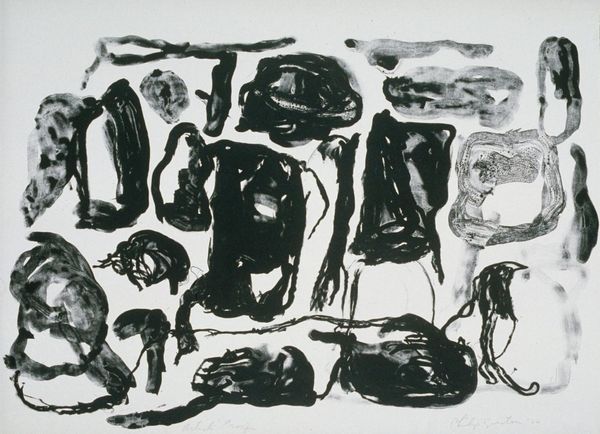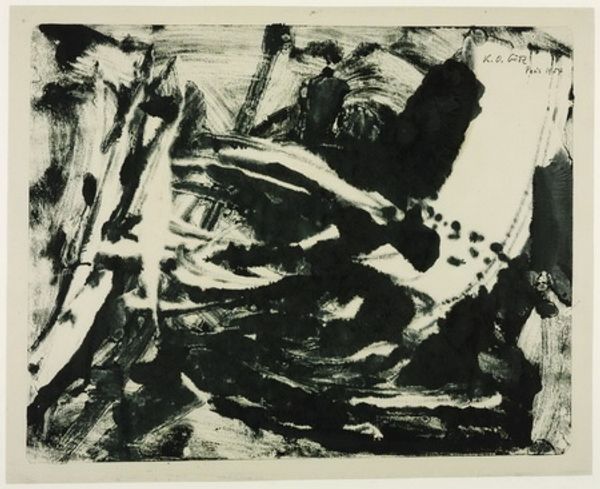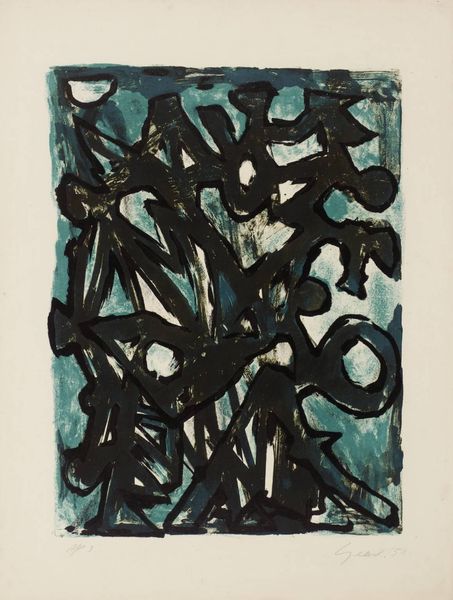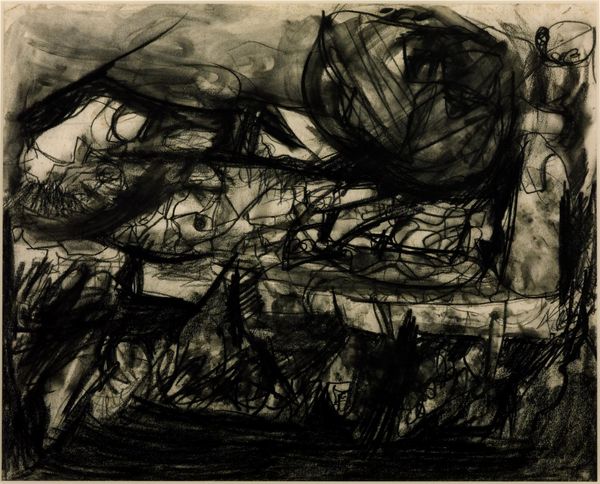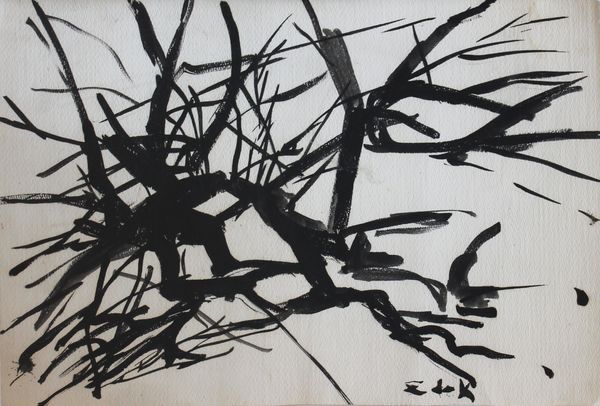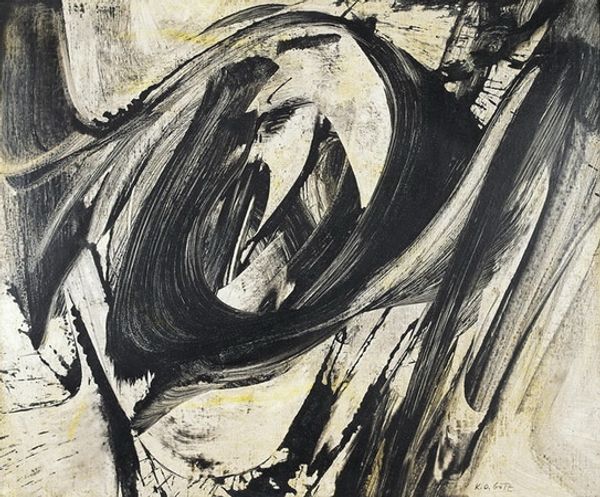
Dimensions: support: 1465 x 2695 mm frame: 1493 x 2721 x 63 mm
Copyright: © Pollock - Krasner Foundation, Inc. | CC-BY-NC-ND 4.0 DEED, Photo: Tate
Curator: Before us, we have Jackson Pollock's "Number 14," a striking example of Abstract Expressionism currently held in the Tate Collections. Editor: It's like looking into a storm cloud, isn't it? Stark and chaotic, yet…somehow balanced. The scale alone is arresting. Curator: Indeed. The interplay of black enamel on canvas disrupts traditional notions of composition and perspective. Pollock's technique emphasizes the performative act of painting. Editor: I imagine him dancing around this canvas, a whirling dervish leaving his soul in streaks of black. It feels primal, almost violent. Curator: The absence of representational forms invites subjective interpretation, challenging the viewer to find meaning within the abstract gestures. Editor: It’s a raw, visceral experience. I see anxiety, but also a strange kind of freedom in the abandonment of control. Curator: Ultimately, Pollock pushes us to reconsider the boundaries of art itself. Editor: It's a wild ride. I'm still trying to make sense of it, and I think that's the point.
Comments
Join the conversation
Join millions of artists and users on Artera today and experience the ultimate creative platform.
tate 8 months ago
⋮
By 1951, Pollock had achieved considerable success with his dripped and poured abstract painting. He was widely regarded as the leading young North American artist. Perhaps fearing that he was reaching a dead-end in his work, he embarked on a series of black and white paintings in which figures emerge, as they had in his early works. After rolling the canvas out on the floor, he would apply the paint – usually industrial enamel paint – with sticks and basting syringes. The artist Lee Krasner, who was married to Pollock, recalled him wielding these ‘like a giant fountain pen’. Gallery label, October 2019
